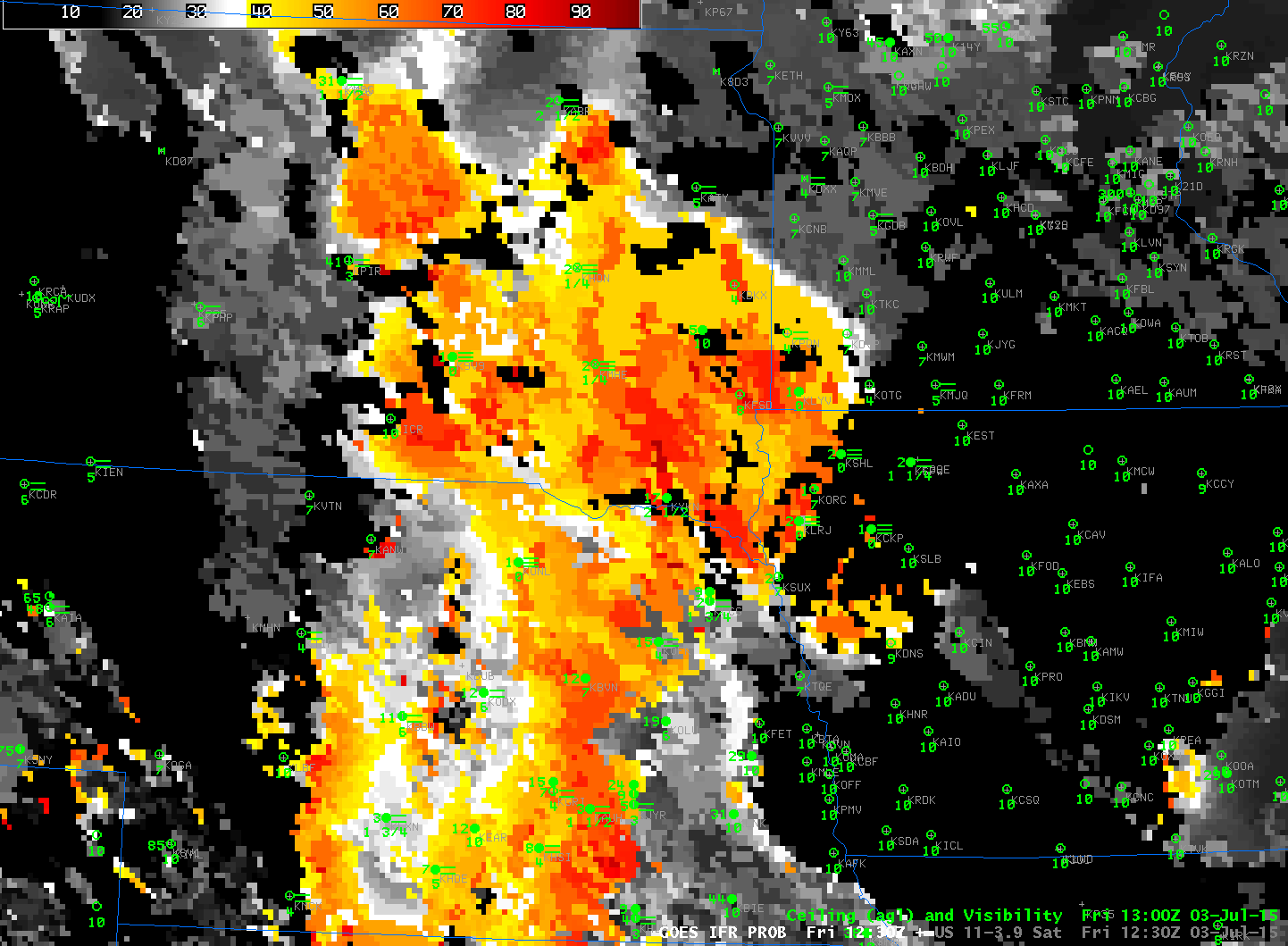
Brightness Temperature Difference (10.7 µm – 3.9 µm) from GOES-13 at 1230 UTC, along with 1200 UTC Ceilings and Visibilities (Click to enlarge)
The Brightness Temperature Difference field is commonly used to detect low clouds in the atmosphere and to infer the presence of fog. At sunrise (and sunset), however, when the amount of reflected solar radiance with a wavelength of 3.9 µm is changing rapidly, features can be lost. For example, can you detect where the brightness temperature difference fields above relate to the observations of dense fog (Dense Fog Advisories were hoisted).
GOES-R IFR Probabilities are able to highlight regions of low clouds and fog through sunrise. The IFR Probability field for 1230 UTC on 3 July is shown below. It does a far better job of outlining the region of low clouds and fog.

GOES-R IFR Probabilities computed from GOES-13 and Rapid Refresh model output, 1230 UTC 3 July 2015 (Click to enlarge)
Animations of the fields, of course, play to the strength of GOES-13 temporal resolution and aid detection. GOES-R IFR Probabilities and Brightness Temperature Difference Field animations are available.
